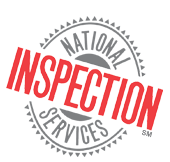Consider the risks, perform due diligence before choosing to seize—or else.
For months lenders have been battered by loan delinquencies on real property. Seizures, often resulting in disappointing short sales, account for massive losses on the loan and accrued interest amount. But, in the view of many, a small recovery is better than nothing.
What many lenders fail to realize—or fail to remember—is that foreclosure poses serious risks when enacted without performing due diligence to determine exactly what is returning to bank control. In some cases, what appears to represent an acceptable recovery may actually turn into a giant liability.
One of the most dangerous areas of real estate liability today is environmental pollution. Under the Comprehensive Environmental Response, Compensation and Liability Act (CERCLA, also known as Superfund), an owner of a contaminated property is strictly liable for the entire cost of cleanup – even when someone else caused the pollution!
This includes lenders. If you have foreclosed on a contaminated property or received a deed-in-lieu of foreclosure, the bank is liable, not only for the cleanup, but also for any damages caused by the pollution to other property owners or persons. Needless to say, subsequent resale of the property—your original objective—will be out of the question.
Sites that are now used for commercial purposes, or have been in the past, are at risk for contamination that can be traced to improper or inadequate waste disposal. Do you know if chemicals of any sort were used on the defaulting property at any time during its history? Recently our firm surveyed a 120-bay freight terminal that, we found, has underground traces of nerve gas and underground pollution from city water treatment chemicals.
Other red flags for contamination and foreclosure risk include:
- Asbestos, which may be present in older buildings, in heating systems, chimneys and wall, floor and ceiling materials
- Lead, which may be found in paint and plumbing system solder
- Radon gas contamination, which is a one-in-three possibility in below-ground or on-grade construction types
- Formaldehyde, which may be found in the air due to certain types of insulation, adhesive, paneling and plywoods
Even though there is an “innocent landowner defense” under CERCLA, it requires that the purchaser did not contribute to the pollution problem and that before obtaining the property, he conducted a thorough investigation that failed to disclose the problem.
Lenders have a responsibility to exercise the same caution they insist upon from loan applicants. When a property is about to change hands, protect your interests by ordering an environmental review (a Phase I Environmental Site Assessment). Additional testing (a Phase II Environmental Site Assessment) for subsurface problems can be quite inexpensive, typically costing between $6,000 and $9,000, but the solutions are never cheap, and will likely prevent you from recouping any loss on the property through foreclosure.
The Phase I assessment can also be used to satisfy one of the requirements to qualify for the innocent land-owner, contiguous property owner or bona fide prospective purchaser limitations under the scope of CERCLA. A Phase I Environmental Site Assessment, completed by ASTM Standard E-1527-05, constitutes “all appropriate inquiry” into the previous ownership and uses of the property consistent with good commercial or customary practice. The buyer, seller and/or lender should also consider obtaining warranties, limitations of liability and covenants against any hazardous materials on the property, together with indemnification agreements whenever possible, especially in deed-in-lieu or short sale contexts. Finally, lenders should also look into the availability and cost of insurance that protects against problems like these.
Exercise strong caution and due diligence in matters of foreclosure. While the chances of acquiring an environmental nightmare may be small, the consequences of not performing adequate research will certainly dwarf the consequences of choosing to let such properties go.
